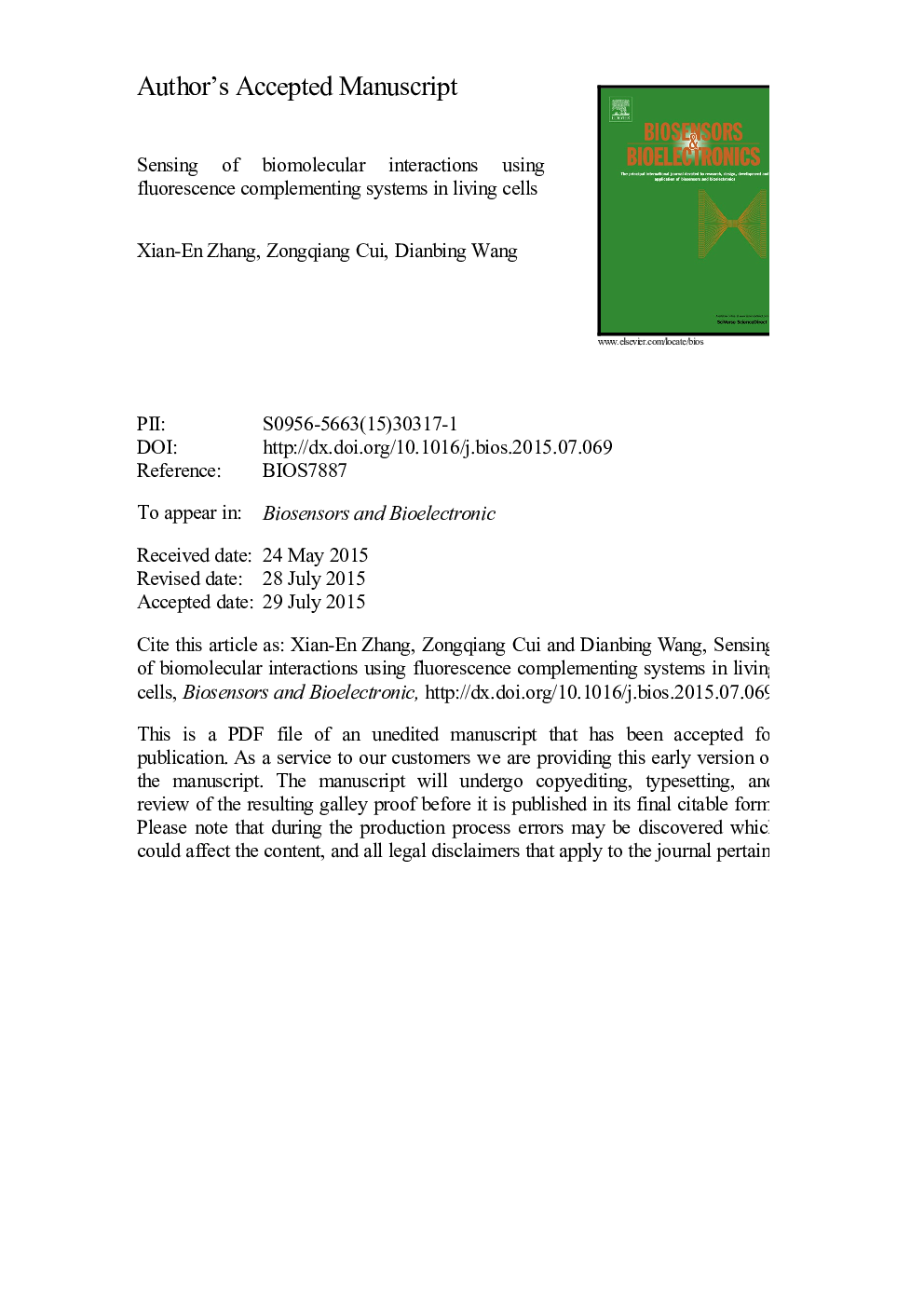| Article ID | Journal | Published Year | Pages | File Type |
|---|---|---|---|---|
| 7231275 | Biosensors and Bioelectronics | 2016 | 22 Pages |
Abstract
Sensing biomolecule interactions in living cells allows for a deeper understanding of the mechanisms governing biological processes, and has increasing significance for improvements in clinical diagnosis. It is now possible by using molecular biosensors. One method involving molecular biosensors is called molecular fluorescence complementation, usually referred to as BiFC (bimolecular fragment/fluorescence complementary/complementation) or TriFC (trimolecular fragment complementary/complementation). This complementation method is based on the principle that two non-fluorescent fragments of a fluorescent protein are brought into sufficient lyclose proximity, upon which they are reconstructed so that fluorescence is re-established. This process relies on the interaction between the two fusion partners, which normally are proteins. This method is simple, noninvasive, sensitive, and does not require specialized tools, hence being available to most standard laboratories. Here, we selectively describe three relevant examples, although many other molecular interactions have been shown to work with this method. Recent developments of this method include multicolor BiFC, which allows for simultaneous detection of multi-biomolecule interactions, RNA-protein interactions, far red and near infrared sensing systems for deep tissue imaging. Challenges in the utilization of this method are discussed. Given the current rate of technological advancements, we believe that fluorescence fragment complementing systems have the potential to be utilized across a wide range of areas, including in routine research and clinical diagnosis.
Keywords
Related Topics
Physical Sciences and Engineering
Chemistry
Analytical Chemistry
Authors
Xian-En Zhang, Zongqiang Cui, Dianbing Wang,
